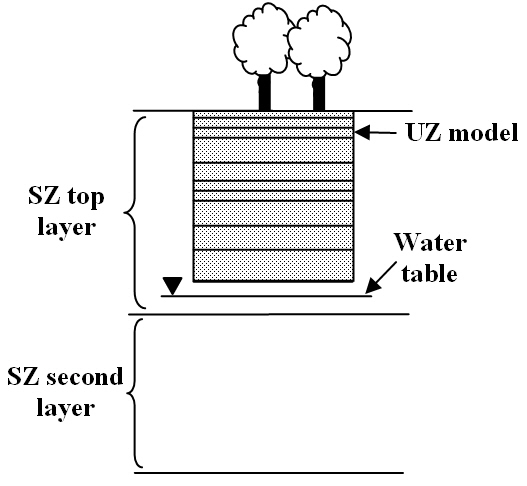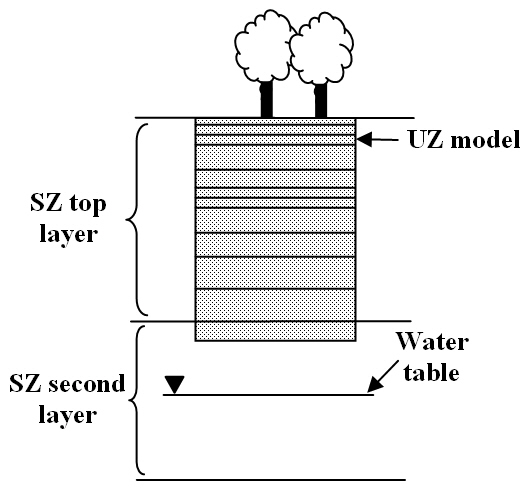
In most cases, the lower boundary is a pressure boundary that is determined by the water table elevation. Then Eq. (28.22) consists of N-M equations. If node M is the first node below the water table, then
(28.24) 
where h is the distance between the water table and node M. Noted that  is independent of
is independent of  since
since  .
.
If the UZ model is not coupled to a SZ model, then the lower boundary is automatically converted from a pressure head boundary to a zero flux boundary (Q=0) if the water table falls below the impermeable bed (see Figure 28.1) and, at same time there is an upward flux in the lower part of the profile. The head boundary is re-started as soon as a positive hydraulic pressure gradient is calculated or the water table starts to rise in the profile.
However, when the UZ model is coupled to an SZ model, the UZ model exchanges water only with the top node of the SZ model. This can lead to three principle conditions:
· If the UZ model intersects the water table in the top layer of the SZ model, then the lower boundary is a normal pressure boundary.

· If the UZ model does not extend to the bottom of the uppermost SZ layer, and the water table in the SZ model falls below the bottom UZ layer, then an error will be generated and the simulation will be stopped.

· If the UZ model extends below the top SZ layer and the top SZ layer dries out, then the UZ model treats the bottom boundary as either a pressure boundary with the pressure equal to the elevation of the bottom of the uppermost SZ layer, or a zero-flux boundary if there is an upward gradient at the lower boundary. The zero-flux boundary is only used for the Full Richards Equation option because the tension term can yield an upwards flow from the groundwater table, which is not physically possible when the upper SZ layer is dry.

In the first and last cases above, the flux out the bottom of the UZ column is added as a flux boundary condition to the uppermost SZ node.